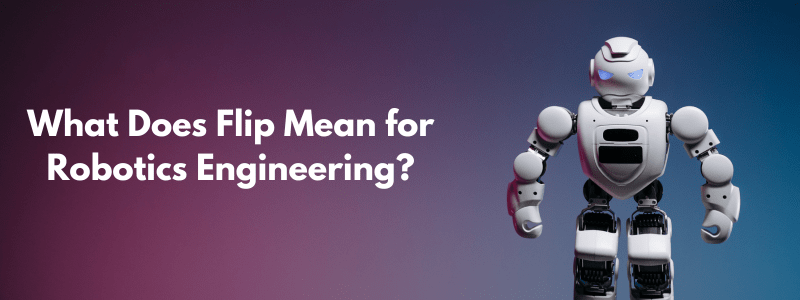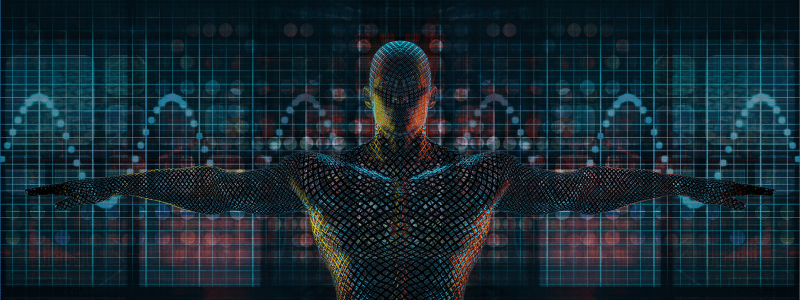
Robotics is shaping our future in more ways than we can imagine. From assembly lines to surgery, robots are becoming more agile, intelligent, and human-like. One emerging concept that has captured the attention of robotic engineers is the “flip“. But what does flip mean for robotics engineering, and why is it so crucial for the future of this field? Let’s flip our way through the details!
Understanding Robotics Engineering
What is robotics engineering?
At its core, robotics engineering involves designing, creating, and operating robots. These machines can perform tasks traditionally carried out by humans. From industrial robots building cars to medical robots assisting in surgeries, robotics is a diverse and ever-growing field.
How does robotics impact various industries?
Robots have revolutionized industries like manufacturing, healthcare, and logistics by automating complex tasks, improving precision, and enhancing safety. Imagine a robot that never tires, never needs a coffee break, and can work 24/7. That’s the reality that robotics engineering brings to life.
Key innovations in the field
Every year, we see robots becoming more sophisticated, thanks to innovations in artificial intelligence (AI), machine learning, and hardware development. From robots that perform surgeries to drones that deliver packages, the evolution of robotics is nothing short of impressive.
The Concept of “Flip” in Robotics
Defining flip in the context of robotics
In robotics, a flip refers to the ability of a robot to perform a quick rotational movement, often mimicking the agility we see in humans or animals. It’s not just a cool party trick for robots; it’s a breakthrough in robotic mobility.
Why flipping is more than just a movement
Flipping in robotics isn’t just about showing off. It’s about adding versatility and agility to machines, allowing them to navigate obstacles or respond quickly to dynamic environments.
How does it influence the control systems in robots
Performing a flip requires precise coordination between the robot’s control systems, sensors, and actuators. It’s a delicate balance that can be easily disrupted without the right programming.
Technological Implications of the Flip
Enhancing robot agility and versatility
Flips enhance a robot’s range of motion, allowing it to complete complex tasks that require rapid shifts in position. It can mean the difference between a clunky robot and one that moves with grace and precision.
The role of AI in the flipping movement
AI is crucial for determining when and how a flip should be performed. Machine learning algorithms allow robots to learn from experience and improve their flipping technique over time.
Real-life examples of flipping robots
Some robots, like Boston Dynamics’ Atlas, can perform flips and other gymnastic movements, showcasing how far robotics engineering has come. These robots are designed to handle environments where traditional robots would struggle.
Robotics Evolution and the Flip
Historical perspective on robotics and movement
Robots in the past were often limited in mobility. Early designs were bulky and moved slowly, relying on rigid joints and limited control systems. However, as technology progressed, so did the robots’ ability to move more fluidly.
From static to dynamic: How flipping changed robotics
The introduction of flipping marks a significant change in robotics. Robots have gone from simply moving in straight lines to executing complex aerial movements, making them more dynamic and versatile.
The flip is a milestone in robotic mobility
Flipping represents a major step forward for robotic mobility, especially in terms of creating robots that can handle real-world challenges. It’s a game-changer in the field of autonomous navigation.
Why is the Flip Important?
Impact on Manufacturing Robots
In manufacturing, flipping robots can adjust their position quickly, allowing them to handle materials or tools with greater efficiency. This increases productivity and reduces downtime.
Benefits of robotic surgery and healthcare
Flipping robots can improve precision in surgeries, particularly in tight or awkward spaces. By adding flexibility, surgeons can rely on robots for more intricate procedures, reducing the risk of human error.
Improvements in autonomous systems like drones and vehicles
For autonomous systems like drones, the ability to flip or change orientation rapidly allows for better maneuverability, especially in unpredictable environments such as disaster zones or tight urban areas.
Flip in Humanoid Robots
Understanding flipping in humanoid robots
In humanoid robots, flipping is a crucial feature that allows them to mimic human-like movements. Whether it’s running, jumping, or even tumbling, these robots rely on flips to adapt to different situations.
The engineering behind flips in walking and running robots
Flipping in humanoid robots requires advanced engineering, particularly in the areas of balance, coordination, and sensor integration. It’s about creating a robot that can move as naturally as possible.
How flips help robots mimic human movements
By performing flips, robots can mimic the dynamic and flexible nature of human motion, which opens the door to robots performing more human-like tasks in various industries.
The Physics Behind the Flip
Mechanics and dynamics of flipping
A successful flip requires understanding the physics of rotational movement, balance, and inertia. The robot must generate enough force to initiate the flip, and then use precise control to complete it without losing balance.
How sensors and actuators coordinate to achieve flips
Sensors help robots understand their orientation and adjust their movement accordingly. Actuators, which are the robot’s muscles, execute the flip by quickly adjusting the robot’s position and maintaining balance during and after the flip.
The role of balance and torque
Balance and torque are key factors in flipping. Too little torque and the robot won’t flip. Too much, and it might over-rotate. Engineers must carefully calibrate these forces to ensure a smooth flip.
Challenges in Implementing the Flip
Technical hurdles in robotic flipping
Achieving a reliable flip requires overcoming several technical challenges, including precise timing, power distribution, and maintaining stability throughout the flip.
Balancing agility with stability
While flipping adds agility, it can also introduce instability if not executed properly. Engineers must find the right balance between quick movements and maintaining control.
Overcoming the limitations of power supply and materials
Flipping requires a significant amount of energy, which can strain the robot’s power supply. Additionally, the materials used must be both lightweight and durable to withstand the forces involved.
Engineering Solutions for Flipping
Advancements in sensor technologies
New sensor technologies, including gyroscopes and accelerometers, help robots better understand their position and environment, enabling more precise flips.
Improvements in robotic flexibility and materials
Modern robots use advanced materials that offer a combination of flexibility and strength, allowing for smoother flips and reducing wear and tear.
Software innovations driving control systems
Software advancements are just as important as hardware when it comes to flipping. Complex algorithms control the timing, force, and trajectory of the flip, ensuring it is executed perfectly.
Future of Robotics and the Flip Concept
Predictions for flipping robots in everyday life
In the future, flipping robots could become more common in households, performing tasks that require quick and dynamic movements, like cleaning or even helping in emergencies.
How flips will revolutionize the industry
The ability to flip adds a new dimension to how robots can be used in various industries, making them more adaptable and capable of handling a wider range of tasks.
Flip’s influence on the Future of human-robot Interaction
Flipping robots will likely become more integrated into daily life, leading to closer collaboration between humans and machines, particularly in fields like healthcare, manufacturing, and entertainment.
Applications of Flipping Robots in Real Life
Flipping drones for efficient delivery services
Drones equipped with flipping capabilities can navigate difficult terrain and deliver packages more efficiently, especially in urban areas where obstacles are common.
Robotic flips in space exploration
In space exploration, flipping robots could be used to navigate different gravitational fields, improving their ability to explore planets and moons.
The role of flips in entertainment and sports robotics
Flipping robots have the potential to revolutionize the entertainment and sports industries, where agility and dynamic movements are key.
Ethical Considerations of Advanced Robotics

Ethical implications of agile robots
As robots become more agile, ethical questions arise about their use in society. How will they impact jobs, and what safety measures need to be in place?
How flips could impact labor markets
Advanced robots that can flip and move dynamically may reduce the need for certain types of manual labor, leading to shifts in the job market.
Balancing innovation with safety and privacy concerns
As flipping robots become more common, it’s essential to consider how to balance technological innovation with concerns about safety, privacy, and regulation.
Conclusion
The concept of a flip in robotics engineering is more than just a cool trick. It’s a significant milestone that opens up new possibilities for robot agility, efficiency, and versatility. Whether it’s enhancing industrial robots, improving medical procedures, or advancing autonomous systems, the flip represents a new frontier in the world of robotics. The future of robotics is exceptionally promising, and we are only beginning to explore its full potential.
FAQs
1. What does flip mean in robotics?
In robotics, a flip refers to a rapid rotational movement that enhances a robot’s agility and versatility, allowing it to navigate complex environments or obstacles.
2. How do robots perform flips?
Robots perform flips by coordinating their control systems, sensors, and actuators to execute a quick rotational movement while maintaining balance and stability.
3. What are the real-world applications of flipping robots?
Flipping robots are used in various fields, including manufacturing, healthcare, autonomous drones, and even space exploration, where agility is crucial.
4. What are the challenges in creating flipping robots?
Challenges include ensuring balance, stability, and precise control during the flip, as well as managing power consumption and the durability of materials.
5. How will flipping robots impact the future of robotics?
Flipping robots will likely revolutionize industries by improving efficiency and adaptability, especially in dynamic environments like disaster recovery, logistics, and healthcare.
To explore more about the impact of artificial intelligence on various technologies, check out our article Latest AI Trends.
